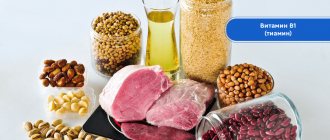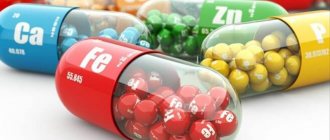Vitamin A is a fat-soluble biologically active substance necessary for the normal functioning of the body. It is also called retinol or beta-carotene; it requires bile for better absorption. As a reserve, it accumulates in the liver and fat cells. With a decrease in the vitamin, hypovitaminosis develops, and with a complete deficiency of the substance, vitamin deficiency develops.
Vitamin A hypovitaminosis and what it can lead to
The following conditions can lead to a lack of retinol:
- Adherence to a diet that involves limited consumption or complete exclusion of foods with vitamin A and healthy fats necessary for its absorption.
- Chronic infectious diseases.
- Various liver pathologies - cirrhosis, hepatitis, fibrosis.
- Irritable bowel syndrome.
- Oncological pathologies.
- The body's high need for retinol. It occurs during pregnancy and breastfeeding, as well as during stressful situations, physical and intellectual work.
- Diathesis in childhood.
The initial prerequisites for a decrease in vitamin levels are indicated by dryness and flaking of the dermis, and impaired visual acuity. Vaginosis may develop.
Due to retinol deficiency, the immune system suffers significantly. Therefore, a person becomes more susceptible to various infections.
3. Symptoms and diagnosis
Almost always, the first symptom that seriously worries the patient and alarms the doctor about hypovitaminosis A is “unreasonable” visual impairment. This trend is far from the only one, but it is so typical, universal and well-known that the special term xerophthalmia, or “dry eye syndrome” is often used to designate the clinical picture of hypovitaminosis A (strictly speaking, the cause of xerophthalmia is not necessarily a deficiency of retinol, but this is true the most common etiological factor).
Since vitamin A is necessary to maintain sufficiently sensitive color and twilight vision, the so-called hypovitaminosis develops. night blindness (nyctalopia, hemeralopia) – the inability to clearly distinguish objects in low light conditions, a kind of “darkening” of the visual field. This symptom is quickly accompanied by a “sandy” pain in the eyes due to insufficient secretion of tear fluid, inflammation of the eyelids and conjunctiva, mucus and crusts in the corners of the palpebral fissure. In other systems of the body, increasing dyspeptic symptoms are observed (nausea, lack of appetite, stool disorders), increased sensitivity to pain and temperature influences, dry and brittle hair, deterioration of the nail plates and cuticles, dandruff, peeling of the skin. Due to the weakening of the protective functions of the immune system, respiratory infections often develop during this period.
The diagnosis is established clinically, based on the presence of a characteristic symptom complex; as a rule, a consultation with an ophthalmologist is necessary (and in some cases it is the ophthalmologist who conducts the initial appointment with a patient with hypovitaminosis A).
Due to the sufficient specificity of the symptoms, diagnostic difficulties usually do not arise, but if necessary, a clarifying laboratory test can be carried out (determining the serum concentration of retinol and carotene).
About our clinic Chistye Prudy metro station Medintercom page!
Signs of retinol deficiency
Vitamin A is simply indispensable for the normal functioning of the body. It is a participant in many physiological processes and is responsible for the strength of the immune system.
The main symptoms of retinol deficiency are:
- Frequent inflammatory diseases of the gastrointestinal tract.
- Poor condition of nails and hair. They become weak, brittle and lifeless. Hair falls out a lot and becomes dull.
- Vision deterioration, especially at night.
- Burning, itching, dryness and other discomfort in the eyes. Over time, clouding of the cornea appears, even leading to blindness.
- Dryness and flaking of the skin, especially noticeable in the area of the knees and elbows.
- Decreased secretion of sweat glands.
- Frequent development of bacterial and infectious pathologies of the bronchopulmonary system. This is due to the drying out of the epithelium, so the body becomes less susceptible to pathogens.
- Deterioration of the reproductive system. Sexual dysfunction and lack of libido in men are observed. Among women, there are problems with menstruation, conception, breast tumors, miscarriages and gynecological diseases.
- Improper growth and development of children. The musculoskeletal system, brain and spinal cord are affected.
Hair loss
It is normal to lose about 100 hairs per day. But if you notice large strands or clumps of hair on your pillow or in the shower, you may be low on iron. You are not alone. This is one of the most common nutritional deficiencies in the world. To check iron, the doctor may prescribe LVSS, Transferrin saturation with iron, Complete blood count (CBC/Diff) with leukocyte count without ESR, Reticulocyte count, Ferritin.
If you're a new mom and your hair is falling out like a waterfall, don't panic right away. During pregnancy, hair usually grows faster and thicker. After childbirth, estrogen and hair fall along with it. In a year everything should be back to normal. Iron deficiency after childbirth is quite common.
Consequences of vitamin A deficiency
A lack of vitamin A negatively affects overall well-being, affecting all systems and organs.
If a deficiency of the substance develops and there is no proper treatment, this can lead to serious complications:
- Diseases of the gastrointestinal tract.
- Pathologies of the bronchopulmonary system of infectious origin.
- Death of eye structures, up to complete blindness.
- Irreversible, serious processes in the bone system in children.
- Frequent gynecological diseases of an inflammatory and infectious nature.
Hypovitaminosis is a group of diseases caused by a lack of one or more vitamins in the body. The extreme degree of hypovitaminosis is vitamin deficiency.
The following types of hypovitaminosis are distinguished: beriberi (lack of thiamine), pellagra (lack of nicotinic acid), “night blindness” (lack of vitamin A), scurvy (lack of vitamin C), rickets (lack of vitamin D), as well as other pathological conditions, associated with a deficiency of folic acid, biotin, vitamins K, B2, B6 and B12.
Currently, severe hypovitaminosis is rare in developed countries. However, the results of laboratory studies indicate that mild forms of hypovitaminosis, occurring without pronounced symptoms, are very widespread even in countries with a high standard of living. The main reasons for the lack of vitamins in Europe and the USA are chronic diseases or operations on the gastrointestinal tract, diets, alcoholism, taking a number of medications, and inadequate parenteral nutrition (administration of nutrients through injections). In Russia, hypovitaminosis is quite common, especially among the elderly and children. The severity and prevalence of various types of hypovitaminosis may vary depending on the region and time of year.
Treatment of hypovitaminosis consists, accordingly, in replenishing the lack of vitamins. The prognosis for timely treatment is favorable. However, some changes that occur with prolonged, severe deficiency of certain vitamins may be irreversible.
Synonyms Russian
Lack of vitamins, vitamin deficiency diseases, vitamin deficiency.
English synonyms
Hypovitaminosis, vitamin deficiency, vitamin deficiency diseases, vitamin deficiency disorders, lack of vitamins.
Symptoms
The manifestations of hypovitaminosis are very diverse; they can impair the functioning of almost all organs and systems of the body. The severity of symptoms depends on the degree of vitamin deficiency. The most common signs of hypovitaminosis are:
- weakness, fatigue,
- anemia,
- bleeding,
- dermatitis,
- nervous system dysfunction,
- disruption of the gastrointestinal tract,
- osteogenesis disorder,
- visual impairment,
- violation of the physical and mental development of the child.
General information about the disease
Vitamins are low-molecular compounds of various structures necessary for the proper functioning of the body. A person needs vitamins A, C, D, E, K and B vitamins (thiamine, riboflavin, niacin, folic acid, pantothenic acid, biotin, vitamins B12, B6). With the exception of D and K, which are synthesized in the body, most vitamins are found in food. Despite very small quantities, they are vital for the full growth and development of the body. Vitamins are involved in most metabolic reactions.
The cause of hypovitaminosis can be a lack of vitamins in food (with an unbalanced diet, fasting), impaired absorption of vitamins in the intestines (with diseases of the gastrointestinal tract, after surgery) or an increase in the need for vitamins (with pregnancy, lactation, taking anticonvulsants and other medications ). As a result of vitamin deficiency, biochemical processes in the body are disrupted, which can manifest itself as a number of general symptoms (decreased appetite, weakness, fatigue) and specific signs characteristic of each type of hypovitaminosis.
Vitamins are most often divided into fat-soluble and water-soluble.
1. Fat soluble
- Vitamin A (retinol). Participates in the synthesis of rhodopsin, the retinal pigment, and maintaining the integrity of the epithelium. Contained in liver, fish, eggs and as a provitamin (carotenoids) in vegetables and some fruits. Its deficiency is manifested by dry eyes, skin rashes and a weakened immune system.
- Vitamin D. Converted in the body into active metabolites that perform specific functions in individual organs. Stimulates the development of bone tissue, the functioning of the immune system, including antitumor immunity, increases the absorption of calcium in the intestine. The bulk of vitamin D is synthesized in the skin under the influence of ultraviolet radiation; some comes from food (cod liver, egg yolk, butter). In developed countries, dairy products are additionally fortified with vitamin D. Its deficiency causes rickets in children and osteomalacia in adults.
- Vitamins of group E have antioxidant properties, that is, they slow down the aging process. They are found in vegetable oil and nuts. When they are deficient, red blood cells and neurons are destroyed, which leads to anemia and nonspecific neurological symptoms.
- Vitamin K. It is partially synthesized by bacteria found in the human intestine, but this amount is not enough for the normal functioning of the body. Contained in green vegetables. Vitamin K deficiency causes bleeding. Newborns are especially susceptible to its deficiency, in whom it can cause hemorrhagic disease.
2. Water soluble
- Vitamin C, or ascorbic acid. Participates in the synthesis of collagen, a number of amino acids and hormones, is responsible for the strength of the vascular wall and bone tissue, improves the functioning of the immune system and wound healing. Contained in broccoli, strawberries, citrus fruits, tomatoes, sweet peppers, rose hips, cabbage. With a deficiency of vitamin C, scurvy develops, which is characterized by bleeding, tooth loss, brittle bones, gingivitis, and poor wound healing.
- Biotin. Participates as a coenzyme in the metabolism of carbohydrates and fats. Contained in egg yolks, liver, legumes, yeast, nuts, cauliflower. Biotin deficiency leads to disruption of the physical and mental development of children, impairs the functioning of the immune system, and can cause rashes and paralysis.
- Folic acid (folate). Necessary for the maturation of red blood cells and the development of the fetal nervous system. Its deficiency occurs when folate is not absorbed in the intestine or when taking medications, although this vitamin is found in sufficient quantities in many foods of both plant and animal origin. Hypovitaminosis causes megaloblastic anemia and congenital neural tube defects.
- Nicotinic acid (niacin, nicotinamide). Participates in redox reactions. Contained in meat, fish, legumes, cereals. The lack of niacin in the diet can be compensated by the use of tryptophan, since the latter can be converted into nicotinic acid in the body. Niacin deficiency causes dermatitis, diarrhea or constipation, and neurological disorders, but is very rare in developed countries.
- Thiamine (vitamin B1). Participates in the metabolism of proteins, fats, carbohydrates, amino acids, in the work of the central and peripheral nervous system, myocardium. Contained in many products, especially cereals, meat, potatoes. With a lack of thiamine, beriberi disease occurs - a disruption of the nervous system and myopathy.
- Riboflavin (vitamin B2). Provides many reactions of carbohydrate metabolism and maintains the integrity of the mucous membranes. With riboflavin deficiency, signs of damage to the mucous membranes appear: dermatitis, anemia.
- B6 vitamins (pyridoxine, pyridoxal, pyridoxamine). They participate in the metabolism of lipids, amino acids, and in reactions that ensure the functioning of the central nervous system, blood cells, and skin. Contained in cereals, legumes, liver, fish. Their deficiency can cause dermatitis, lymphopenia, depression, and seizures.
- Vitamin B12 (cobalamin). Participates in the synthesis of DNA, methionine, maturation of red blood cells, and the functioning of the central nervous system. Contained mainly in products of animal origin: meat, fish, eggs, milk. Cobalamin deficiency leads to anemia and various neurological disorders: paresthesia, ataxia, impaired consciousness.
Who is at risk?
- Pregnant and lactating women.
- Those who are malnourished and do not consume specific foods – only a varied diet can provide the required amount of vitamins from different groups.
- People on diets.
- Taking anticonvulsants.
- Suffering from chronic diseases of the gastrointestinal tract or having undergone surgery on the stomach or intestines.
- Alcoholics.
Diagnostics
Symptoms of severe forms of hypovitaminosis are, as a rule, quite specific, which allows the doctor to easily assume a deficiency of a particular vitamin. However, in cases of slight hypovitaminosis and the presence of concomitant diseases with similar symptoms, a number of laboratory or instrumental studies may be required.
Laboratory diagnostics
- Determination of vitamin levels in blood serum
- Vitamin B12 (cyanocobalamin)
- Vitamin B9 (folic acid)
- Vitamin A (retinol)
- Vitamin B1 (thiamine)
- Vitamin B5 (pantothenic acid)
- Vitamin B6 (pyridoxal 5-phosphate)
- Vitamin C (ascorbic acid)
- Vitamin D, 25-hydroxy (calciferol)
- Vitamin E (tocopherol)
- Vitamin K (phylloquinone)
- General blood analysis. With a deficiency of folic acid or vitamin B12, megaloblastic anemia can be observed, with a deficiency of vitamin B6 - lymphopenia.
- Total alkaline phosphatase. May be increased with rickets.
- Prothrombin index (PI), INR (international normalized ratio). With vitamin K deficiency, the prothrombin index can be increased with normal levels of other coagulation parameters: fibrinogen, thrombin time, activated partial thromboplastin time, platelet count. In case of vitamin C deficiency, the coagulogram is normal.
- Calcium in daily urine. With rickets, calcium levels are reduced. To monitor the treatment of rickets with vitamin D, the Sulkovich test can also be used to determine the amount of calcium in a single portion of urine. The result is indicated in crosses from 0 to 4.
- Ionized calcium. With rickets it can also be reduced.
- Serum calcium. Calcium levels in rickets may be reduced or within normal limits due to increased concentrations of parathyroid hormone.
- Phosphorus in serum. This indicator is sometimes reduced with rickets.
- Homocysteine. Homocysteine levels increase with vitamin B12 deficiency.
- Parathyroid hormone. Parathyroid hormone levels may be elevated due to rickets.
Other studies
- X-ray of bones. With rickets, changes in bone tissue resemble atrophy, flattening of the epiphyses of the bones is observed, the periosteum is raised and calcified.
- Fibrogastroduodenoscopy (FGDS) is an examination of the digestive system using an endoscope. Allows you to identify diseases that result in impaired absorption of vitamins.
- MRI (magnetic resonance imaging) and CT (computed tomography). Imaging methods that can be used to differentiate hypovitaminosis from other diseases accompanied by damage to the nervous system, such as tumors.
In some cases, consultation with specialists such as a neurologist, ophthalmologist, or gastroenterologist is required.
Treatment
Treatment consists of oral, intramuscular and intravenous administration of appropriate doses of vitamins, as well as treatment of diseases leading to disturbances in the absorption and metabolism of vitamins in the body.
Prevention
Prevention of hypovitaminosis consists of a balanced diet, as well as taking additional doses of vitamins if necessary (for example, during pregnancy or during recovery from serious illnesses).
Recommended tests
- General blood analysis
- Total alkaline phosphatase
- Vitamin B12 (cyanocobalamin)
- Vitamin B9 (folic acid)
- Vitamin A (retinol)
- Vitamin B1 (thiamine)
- Vitamin B5 (pantothenic acid)
- Vitamin B6 (pyridoxal 5-phosphate)
- Vitamin C (ascorbic acid)
- Vitamin D, 25-hydroxy (calciferol)
- Vitamin E (tocopherol)
- Vitamin K (phylloquinone)
- Activated partial thromboplastin time (aPTT)
- Coagulogram No. 1 (prothrombin (according to Quick), INR)
- Fibrinogen
- Thrombin time
- Calcium in daily urine
- Serum calcium
- Ionized calcium
- Serum phosphorus
- Homocysteine
- Parathyroid hormone, intact
- Laboratory diagnosis of rickets
- Monitoring the prevention of rickets
- Fat-soluble vitamins (A, D, E, K)
- Water-soluble vitamins (B1, B5, B6, B9, B12, C)
- Complex blood test for vitamins (A, D, E, K, C, B1, B5, B6, B9, B12)
Literature
- MarkH. Beers (chief ed.) – The Merck Manual. Guide to Medicine. Diagnostics and treatment – 2011
- Harrison S. Principles of Internal Medicine. 18Ed.
How to compensate for the lack of retinol
A subtle deficiency of vitamin A in the body can be compensated for by a special diet. To do this, the patient’s diet is enriched with foods high in this substance: butter, cheese, liver, eggs, in particular yolks, fish oil, many seafood, cottage cheese, sour cream.
You can also include plant-based foods that contain a lot of beta-carotene in your menu. This is all kinds of leafy greens, vegetables and fruits (carrots, oranges, tangerines, pumpkin, sea buckthorn).
By consuming these foods, you can ensure good prevention of vitamin A deficiency.
Symptoms of pathology
Symptoms of vitamin deficiency depend on several factors. The main group becomes a vitamin whose deficiency is observed in the human body. The clinical picture of the pathology is significantly influenced by the form of hypovitaminosis (mild, moderate, severe) and the patient’s age.
Common signs of all types of vitamin deficiencies are:
- decreased appetite;
- increased fatigue;
- drowsiness;
- irritability;
- attacks of nausea.
The first signs of pathology appear with a significant lack of vitamin in the diet of a child or adult.
| Deficiency vitamin | Symptoms |
| A | Visual impairment – twilight blindness, distorted color perception. The keratinization of the skin increases, the hair becomes thin and brittle |
| B1 (beriberi disease) | The skin becomes thinner and dry. The sensitivity of the legs is impaired, and fluctuations in body temperature are noted. The calf muscles often cramp. When reporting the form, shortness of breath, tachycardia and severe edema appear |
| B3 (pellagra) | The skin darkens and flakes intensely. The hands become covered with red, swollen spots, which are similar to manifestations of an acute inflammatory process. |
| B6 (hyporiboflavinosis) | Conjunctivitis develops. The red border of the lips dries out and peels, and cracks appear in the corners of the mouth. The tongue becomes crimson and shiny. There are teeth marks on his sides |
| B12 | Signs of anemia and atrophic gastritis develop. Foci of burning and tingling form on the tongue. Muscle tone weakens, the patient’s gait changes |
| C (scurvy) | The gums become swollen and bleed. The skin becomes thinner and becomes dry and flaky. Hemarthrosis of the knee joints develops, teeth become loose and fall out |
Do you have symptoms of vitamin deficiency?
Only a doctor can accurately diagnose the disease. Don't delay your consultation - call
Treatment of vitamin A deficiency
Therapeutic measures to restore retinol levels are carried out only after consultation with a specialist. The patient should undergo a series of tests. If a severe vitamin deficiency is confirmed, then you cannot do without taking medications.
As a rule, retinol is sold in the form of capsules with liquid contents. They are taken orally during meals. Vitamin A oil solution is used externally. Depending on the purpose, the required therapeutic dose should be measured. For example, for hair, nails or skin care.
Retinol is often included in various vitamin complexes. The substance is much better absorbed in the body if used together with vitamin E. Therefore, it is recommended to purchase medications that contain both products: tocopherol and retinol.
Beta-carotene, like retinol, is available from pharmacies in the form of capsules for oral administration. The course of therapy and duration are determined by the doctor, taking into account the clinical features of the deficiency of the biologically active substance.
Taking medications on your own is contraindicated, since excess retinol is just as dangerous to health as its deficiency. Uncontrolled use of the vitamin negatively affects the functioning of the liver, endocrine system and intestines. It also provokes irritability, nervousness, and intolerance to light in the eyes. During pregnancy, vitamin A in large quantities can contribute to disruption of intrauterine development.
Unexplained fatigue
This symptom fits almost any vitamin or mineral deficiency. It may be time to check your vitamin D levels. This vitamin is unique. It reduces the risk of cardiovascular disease, flu, multiple sclerosis, diabetes, colon, breast and prostate cancer. Plays an important role in regulating mood, sleep and wakefulness, and preventing depression. Increases calcium and phosphorus absorption and promotes bone mineralization. Vitamin D deficiency can cause muscle pain, weakness and unexplained fatigue.
WHY DO YOU NEED A 25-OH VITAMIN D TEST? Easy to measure. Just one 25-OH vitamin D test will show your current vitamin levels and supplemental needs. taking medications. Easy to pass. Add the 25-OH vitamin D test to your cart, sign up for delivery and receive a 50% discount by paying for your order online. Easy to adjust. Enter your 25-OH Vitamin D test results into our free calculator. We will calculate your dosage of vitamin D medications and offer you a convenient dosage regimen.
Vitamins B9 and B12 help the body produce red blood cells and chemicals that regulate sleep patterns and mood. When you don't get enough of them, you may feel forgetful, weak, and apathetic.
How to get your daily requirement of micronutrients?
Since the content of vitamins and minerals in foods decreases, to obtain the daily requirement of micronutrients, you need to increase portions to abnormal sizes. For example, when recalculating the content of micronutrients in products, the daily norm of vitamins and minerals for a person is:
- Folic acid – 300 g of liver or half a kilogram of lettuce.
- Iron – 350 g beef.
- Iodine – about 2 kg of fish or 4 to 6 kg of iodized salt.
- Vitamin B1 – 1 kg of black bread.
Thus, the desire to eliminate the lack of vitamins and minerals will lead to a person receiving an excess of fats, proteins and carbohydrates, and this can lead to such serious consequences as obesity, dysbiosis, and indigestion. In addition, it is not always possible to obtain all the necessary micronutrients from food for economic reasons. For example, vitamin D3 is found in fish and caviar, which are rarely found on the average person’s table. But this vitamin, like all others, is needed by the body every day.
Clinical researches
All products of the Atoderm line were developed with the participation of Professor Denis Vladimirovich Zaslavsky, chief specialist in dermatovenereology and cosmetology of the Ministry of Health of the Russian Federation in the Northwestern Federal District of the Russian Federation.
Conducted clinical studies prove the high efficiency, safety and tolerability of products for daily skin care for children and adults.
Sources:
- Yukhtina N.V., Modern ideas about atopic dermatitis in children
- Kamasheva G.R., Khakimova R.F. Valiullina S.A., Methods for assessing the severity of atopic dermatitis in young children, Dermatology journal, 2010
- Kovyazina N.A., Fedosimova N.A., Illek Ya. Yu. Diagnosis of atopic dermatitis in young children, Vyatka Medical Bulletin, 2007
Taking vitamin-mineral complexes as a prevention of hypovitaminosis in pregnant women
To eliminate micronutrient deficiencies, the World Health Organization (WHO) recommends that pregnant women take vitamin and mineral complexes that will compensate for the lack of nutrients. For example, the Pregnoton Mama complex includes:
- Iron in liposomal form to prevent anemia. It is easily digestible and does not create problems with the gastrointestinal tract.
- Iodine for proper growth of the fetus, especially the brain, vision and hearing.
- Omega-3 for the formation of the brain, vision, immune and nervous systems.
- Folic acid (active, bioavailable form), which prevents congenital malformations of the nervous system.
- 13 more vitamins and minerals.
Pregnoton Mom will help mother and child get the missing amount of essential vitamins and minerals; it is enough to take one capsule every day.
The complex does not contain preservatives. It can be used throughout pregnancy and breastfeeding.
THIS IS NOT AN ADVERTISING. THE MATERIAL WAS PREPARED WITH THE PARTICIPATION OF EXPERTS.








